Fifty Years in the Zone: The Twilight Zone’s 50th Anniversary
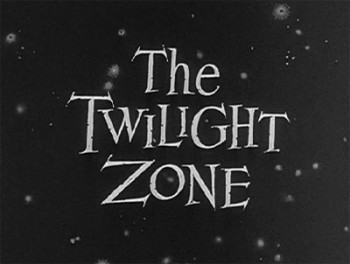
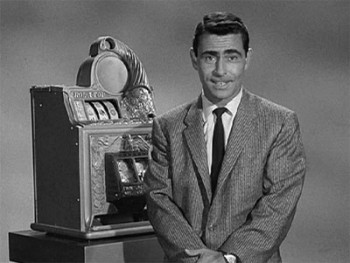 The place is here, the time is now, and the journey into the shadows that we’re about to watch could be our journey.
The place is here, the time is now, and the journey into the shadows that we’re about to watch could be our journey.
With those words, spoken exactly fifty years ago by a respected television dramatist over an image of a man walking down a lonesome dirt road toward an empty town, started a journey into the imagination that continues to this day.
Last Friday was the fiftieth anniversary of The Twilight Zone. The speculative-fiction show created by Rod Serling broadcast its first episode, “Where Is Everybody?”, on 2 October 1959 on CBS. The world has never been the same since we crossed over into another dimension, not of sight or sound, but of mind. Brilliant writing, endless imagination, and the inspiration for countless authors, filmmakers, and other assorted dreamers resulted from this landmark along the roadway to the metaphorical Zone.
The Twilight Zone is unquestionably the most influential anthology television program in history (and it appeared at a time when anthology shows crawled under every rock on the networks’ schedules), and has an undisputed slot on any list of the top TV shows ever broadcast. People who have never seen a single episode from the five seasons the show was originally on the air or during its legion of syndicated showings (Thanksgiving Day Marathons were an L.A. staple when I was kid) still know exactly what the show is about and could even describe the types of science-fiction and fantasy stories—reality benders, twist endings, alienation, social commentary—that Rod Serling and his stable of talented scribes liked to put on the program. The Twilight Zone has grown beyond a television program—and I don’t mean through its various spin-offs, like two later network revivals, a troubled feature film (and talk of another making the rounds), numerous books, and a long-running anthology magazine. I mean that The Twilight Zone has turned into a way of perceiving genre, and its very name evokes a special state of creativity.
In honor of the show’s fifth decade, I went over the first season with a toothless comb (it seemed the appropriately ironic method) and then took a rocket ship back to this dimension. I mean, I think I’m back in my home dimension… but then, People Are Alike All Over, right Roddy McDowall? Anyway, I’ve brought back a few of my findings from the Other Dimension. Did you bring an extra pair of prescription glasses? Good, let’s start.
The first season is arguably the strongest in Twilight Zone history. At least five episodes are classics in the canon—“Walking Distance,” “Time Enough at Last,” “The Hitch-Hiker,” “A Stop at Willoughby,” and “The After Hours”—and many of the rest—“Long Live Walter Jameson,” “Nightmare as a Child,” “The Last Flight,” “I Shot an Arrow into the Air,” and “Judgment Night”—are merely great.
Rod Serling was a workhorse on this first season, contributing or co-writing the majority of the scripts. His great collaborators all climbed on during the later part of the season, but most of the excellent episodes this year were the product of Serling’s imagination, which drew not only on his love of old science-fiction radio programs, but also his experience in war (“The Purple Testament”) and boxing (“The Big Tall Wish”)
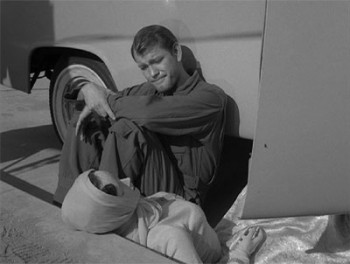 The pilot and first episode aired, Where Is Everybody?, is unusual in that it contains no science-fiction or fantasy elements at all—something that would occur only twice more during the show’s run. CBS apparently didn’t want a speculative fiction show, and Serling played along…at least for one week. The episode still has power because it established from the first that The Twilight Zone wanted to appear cinematic. The episodes that followed would feature a mixture of clever camera-work and set-ups to give the feeling of a “half-hour feature film” that was impressive in 1959–60. Even inexpensive “bottle shows” like “A World of His Own” and “Nightmare as a Child” expand beyond the limits of appearing like filmed stage plays.
The pilot and first episode aired, Where Is Everybody?, is unusual in that it contains no science-fiction or fantasy elements at all—something that would occur only twice more during the show’s run. CBS apparently didn’t want a speculative fiction show, and Serling played along…at least for one week. The episode still has power because it established from the first that The Twilight Zone wanted to appear cinematic. The episodes that followed would feature a mixture of clever camera-work and set-ups to give the feeling of a “half-hour feature film” that was impressive in 1959–60. Even inexpensive “bottle shows” like “A World of His Own” and “Nightmare as a Child” expand beyond the limits of appearing like filmed stage plays.
“Where Is Everybody?”, the story of an amnesiac man (Earl Holliman) wandering around a mysteriously vacant town, also highlights the series’ popular theme of alienation and identity loss. During this season, the ideas in “Where Is Everybody?” would surface in more refined form in such episodes such as “The After Hours,” “A World of Difference,” and “Walking Distance.”
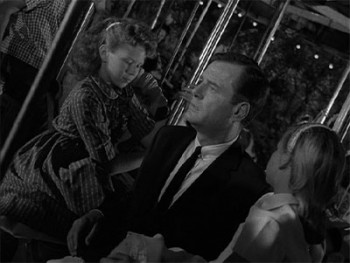 And it is Walking Distance, the fifth aired episode, that is the first classic of the show. This near-perfect piece of drama from Serling’s pen brings a tired business executive (Gig Young) to his boyhood hometown—given the archetypal name of “Homewood”—only to discover it hasn’t changed one bit, right down his family and himself as a boy. Ron Howard even lives there. “Walking Distance” captures a sense of wistfulness and regret like a great Ray Bradbury story, and doesn’t need to rely on a twist ending. The episode also sports a powerful original score by Bernard Herrmann, a mainstay at CBS radio and television and the most respected film composer in the medium’s history (his film career started with Citizen Kane and ended with Taxi Driver—not bad). Herrmann also composed the slow and strange main title theme for The Twilight Zone’s first season. The later seasons would use a combination of two pieces of library music by Marius Constant; this is the more famous of the two opening themes, but Herrmann’s subdued eeriness really grew on me as I moved through the episodes of this first year.
And it is Walking Distance, the fifth aired episode, that is the first classic of the show. This near-perfect piece of drama from Serling’s pen brings a tired business executive (Gig Young) to his boyhood hometown—given the archetypal name of “Homewood”—only to discover it hasn’t changed one bit, right down his family and himself as a boy. Ron Howard even lives there. “Walking Distance” captures a sense of wistfulness and regret like a great Ray Bradbury story, and doesn’t need to rely on a twist ending. The episode also sports a powerful original score by Bernard Herrmann, a mainstay at CBS radio and television and the most respected film composer in the medium’s history (his film career started with Citizen Kane and ended with Taxi Driver—not bad). Herrmann also composed the slow and strange main title theme for The Twilight Zone’s first season. The later seasons would use a combination of two pieces of library music by Marius Constant; this is the more famous of the two opening themes, but Herrmann’s subdued eeriness really grew on me as I moved through the episodes of this first year.
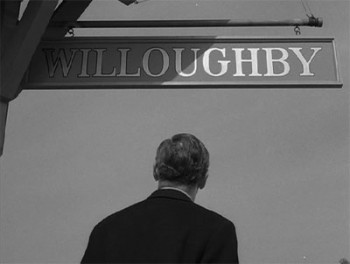 “Walking Distance” has a companion piece from later in the season: A Stop at Willoughby. Another beaten and tired business executive (James Daly) longs to escape to simplicity. But where “Walking Distance” spends the entire time in that simplicity, “A Stop at Willoughby” uses it as a teaser, a flash of a place that appears as a ghost stopping point along a commuter railway. The episode does contain a sting in its tail, and it’s a memorable one.
“Walking Distance” has a companion piece from later in the season: A Stop at Willoughby. Another beaten and tired business executive (James Daly) longs to escape to simplicity. But where “Walking Distance” spends the entire time in that simplicity, “A Stop at Willoughby” uses it as a teaser, a flash of a place that appears as a ghost stopping point along a commuter railway. The episode does contain a sting in its tail, and it’s a memorable one.
The Twilight Zone is often considered a “scary” show (the Dan Akroyd character in the prologue of the 1983 Twilight Zone: The Movie seems to only recall it as frightening), but that’s something of a misconception. Most of the episodes tend toward “weird” or “wistful” rather than terrifying. The Twilight Zone does have its freakish outings, but the best of these appeared in later seasons (I’m thinking in particular of “The Living Doll” and “Nightmare at 20,000 Feet,” both of which are fifth season shows). The scariest episodes from the first season are “The Hitch-Hiker,” “Nightmare as a Child,” and The Fever. 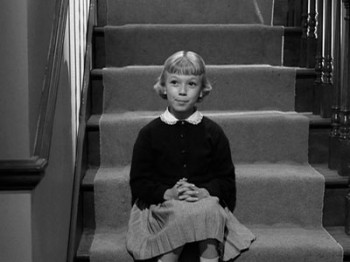 The last is a simple moral fable about gambling obsession, where a slot machine hooks a man on vacation to Las Vegas and then pursues him to his death. Its most frightening effect is how the machine calls out its victim’s name with the sound of coins falling. Nightmare as a Child is a claustrophobic and spooky story of a women visited by a pestering and eerie little girl who seems intent on dredging up memories of the woman’s witnessing of her mother’s murder. It’s an almost-great episode that collapses near the end in a resolution that doesn’t live up to its earlier atmosphere. But Terry Burnham is one creepy kid.
The last is a simple moral fable about gambling obsession, where a slot machine hooks a man on vacation to Las Vegas and then pursues him to his death. Its most frightening effect is how the machine calls out its victim’s name with the sound of coins falling. Nightmare as a Child is a claustrophobic and spooky story of a women visited by a pestering and eerie little girl who seems intent on dredging up memories of the woman’s witnessing of her mother’s murder. It’s an almost-great episode that collapses near the end in a resolution that doesn’t live up to its earlier atmosphere. But Terry Burnham is one creepy kid.
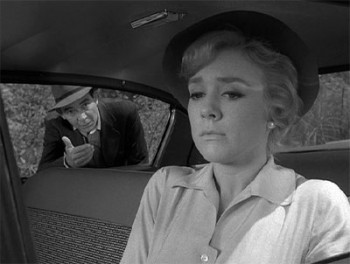 The Hitch-Hiker, however, is one of the show’s superlative twenty-four minutes. It’s the only time that The Twilight Zone adapted a story from a radio play, written by Lucille Fletcher and which appeared on the famous program Suspense with Orson Welles in the lead. The TV version changes the main character into a woman (Inger Stevens) for its dip into the famous “phantom hitch-hiker” urban legend. (Fletcher claims she had never actually heard the legend before she wrote the radio play.) The intensity and growing paranoia of the story, and its existential coda, are unforgettable. If you live in Los Angeles, you’ll also find it amusing how Inger Stevens’s cross-country trip seems to consist entirely of Malibu Canyon Road.
The Hitch-Hiker, however, is one of the show’s superlative twenty-four minutes. It’s the only time that The Twilight Zone adapted a story from a radio play, written by Lucille Fletcher and which appeared on the famous program Suspense with Orson Welles in the lead. The TV version changes the main character into a woman (Inger Stevens) for its dip into the famous “phantom hitch-hiker” urban legend. (Fletcher claims she had never actually heard the legend before she wrote the radio play.) The intensity and growing paranoia of the story, and its existential coda, are unforgettable. If you live in Los Angeles, you’ll also find it amusing how Inger Stevens’s cross-country trip seems to consist entirely of Malibu Canyon Road.
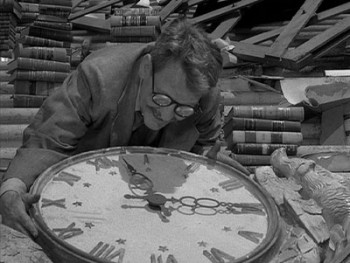 All sane humans would agree that Time Enough at Last is the most famous episode in Zone history. All you have to do is say “atomic aftermath with prescription glasses,” and people know what of you speak. Star Burgess Meredith would appear in four episodes total of The Twilight Zone (tying Jack Klugman for most spots on the show), and along with the Penguin in the 1960s Batman and Mickey in Rocky, his role as the myopic bookworm who finds that nuclear annihilation has an upside is his most famous part. “Time Enough at Last” is a odd piece of television, seeming at first like a particularly grim sitcom, then unleashing one of the most inexplicable nuclear apocalypses ever visualized. It’s all in service of the bleakest black joke Rod Serling could inflict on one of his characters. Meredith’s connection to The Twilight Zone would continue into the 1980s, when he served as the narrator in lieu of the deceased Rod Serling on Twilight Zone: The Movie.
All sane humans would agree that Time Enough at Last is the most famous episode in Zone history. All you have to do is say “atomic aftermath with prescription glasses,” and people know what of you speak. Star Burgess Meredith would appear in four episodes total of The Twilight Zone (tying Jack Klugman for most spots on the show), and along with the Penguin in the 1960s Batman and Mickey in Rocky, his role as the myopic bookworm who finds that nuclear annihilation has an upside is his most famous part. “Time Enough at Last” is a odd piece of television, seeming at first like a particularly grim sitcom, then unleashing one of the most inexplicable nuclear apocalypses ever visualized. It’s all in service of the bleakest black joke Rod Serling could inflict on one of his characters. Meredith’s connection to The Twilight Zone would continue into the 1980s, when he served as the narrator in lieu of the deceased Rod Serling on Twilight Zone: The Movie.
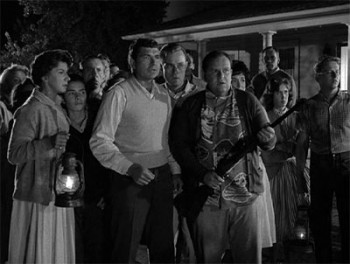 My choice, however, for the season’s finest episode is Serling’s social commentary on McCarthyism and contemporary witch-hunts, and one the hasn’t dated at all over the next five decades, as our society keeps depressing pace with it: The Monsters Are Due on Maple Street. The episode also reads well as a parody of the white-picket-fence family sitcom. Wouldn’t it be great if the charming suburb in Leave It to Beaver erupted into violent paranoia? Well, this is the closest you’ll get to that, as a little suburb suspicious of an alien invasion rips itself apart trying to find the aliens’ supposed “collaborators” hiding among them. It’s a brilliant examination of “we should not go in fear of each other,” which climaxes in a frantically edited explosion of total panic. Serling’s final narration is a classic that feels too modern:
My choice, however, for the season’s finest episode is Serling’s social commentary on McCarthyism and contemporary witch-hunts, and one the hasn’t dated at all over the next five decades, as our society keeps depressing pace with it: The Monsters Are Due on Maple Street. The episode also reads well as a parody of the white-picket-fence family sitcom. Wouldn’t it be great if the charming suburb in Leave It to Beaver erupted into violent paranoia? Well, this is the closest you’ll get to that, as a little suburb suspicious of an alien invasion rips itself apart trying to find the aliens’ supposed “collaborators” hiding among them. It’s a brilliant examination of “we should not go in fear of each other,” which climaxes in a frantically edited explosion of total panic. Serling’s final narration is a classic that feels too modern:
The tools of conquest do not necessarily come with bombs and explosions and fallout. There are weapons that are simply thoughts, attitudes, prejudices, to be found only in the minds of men. For the record, prejudices can kill, and suspicion can destroy, and the frightened, thoughtless search for a scapegoat has a fallout all of its own: for the children, and the children yet unborn. And the pity of it is that these things cannot be confined to the Twilight Zone.
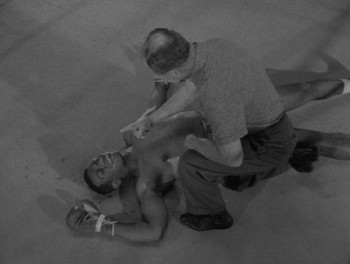 Serling was not only writing smart contemporary commentary through science fiction on the show, he also broke racial barriers as well. The Big Tall Wish isn’t an exceptional episode, but it does featuring exceptional casting, with an almost all black dramatis personae. This was nearly unheard of at the time. Even more surprising, the story isn’t a tale about race at all, but a quiet fable about a boxer who rejects a little boy’s wish after it comes true. Jerry Goldsmith, on his way to fame in film composing, wrote one of the show’s best scores for this episode.
Serling was not only writing smart contemporary commentary through science fiction on the show, he also broke racial barriers as well. The Big Tall Wish isn’t an exceptional episode, but it does featuring exceptional casting, with an almost all black dramatis personae. This was nearly unheard of at the time. Even more surprising, the story isn’t a tale about race at all, but a quiet fable about a boxer who rejects a little boy’s wish after it comes true. Jerry Goldsmith, on his way to fame in film composing, wrote one of the show’s best scores for this episode.
An individual facing—or even accepting—a loss of identity turns up in many of Serling’s scripts for the season, such as the aging film star (Ida Lupino) in The Sixteen Millimeter Shrine, an episode that only loses some of its luster because of comparisons to Billy Wilder’s earlier film noir classic Sunset Boulevard; a woman (Vera Miles) who thinks she has met her double and will be replaced by it in Mirror Mirror; and most notably the confused Marsha White of 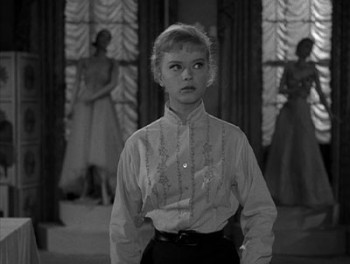 The After Hours, one of Serling’s finest achievements. Forever known as “the mannequin episode,” “The After Hours” is a perfect example of how The Twilight Zone could be creepy, weird, and emotionally affecting at the same time. The performance from Anne Francis is one of great subtlety that leaves viewers with hanging questions at the end—but this is a case where the remaining questions are justified.
The After Hours, one of Serling’s finest achievements. Forever known as “the mannequin episode,” “The After Hours” is a perfect example of how The Twilight Zone could be creepy, weird, and emotionally affecting at the same time. The performance from Anne Francis is one of great subtlety that leaves viewers with hanging questions at the end—but this is a case where the remaining questions are justified.
Twilight Zone’s elasticity of setting also allowed Serling to experiment with established genres. Mr. Denton on Doomsday is a Western (the most popular genre on TV at the time), and The Purple Testament and Judgment Night are World War II stories. Although none of these episodes are classics, they maintain the high quality of the season (I have a personal fondness for the “Groundhog Day if you’re a Nazi” premise of “Judgment Night,” and “The Purple Testament” has a small part for Warren Oates, and it reflects Serling’s own wartime experience.) These settings would return in the later seasons.
Three other writers joined Serling during the first season, and all of them became long-time contributors on the show: Charles Beaumont, George Clayton Johnson, and Richard Matheson. Johnson had a slow start this season: he wrote the unpublished short story that would turn into the underrated and beautifully photographed film noir outing 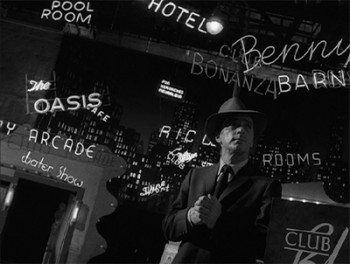 The Four of Us Are Dying (which also sports the first score in the series from Jerry Goldsmith, a dirty jazz joy) and also the story for the time-travel piece The Execution, which contains one of the roughest and most unpleasant lead characters in Zone history, an Old West murderer played superbly by Albert Salmi.
The Four of Us Are Dying (which also sports the first score in the series from Jerry Goldsmith, a dirty jazz joy) and also the story for the time-travel piece The Execution, which contains one of the roughest and most unpleasant lead characters in Zone history, an Old West murderer played superbly by Albert Salmi.
Charles Beaumont, who would die in his thirties from a strange brain disease that wasted him away, wrote four episodes this season: “Perchance to Dream,” “Elegy,” “Long Live Walter Jameson,” and “A Nice Place to Visit.” Perchance to Dream is a good exercise for French director Robert Florey to throw around expressionist dream imagery, and it was the first episode aired that was not from a Rod Serling script. A Nice Place to Visit is minor, and Elegy is an interesting story that features—for the third time in the season—astronauts landing on an unusual planet with earth-like similarities (the other two are I Shot an Arrow into the Air and People Are Alike All Over).
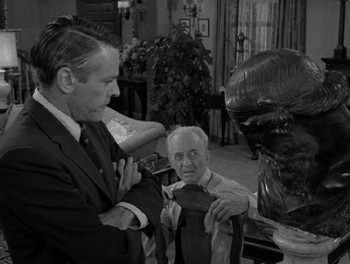 It’s Long Live Walter Jameson that gives Beaumont his best platform for this season, and it unfortunately would reflect his own life. The aging Professor Samuel Kittridge has noticed that colleague Walter Jameson seems to have aged not a single year during the last dozen. His history lectures sound as is he were describing scenes he actually witnessed. And there’s a Civil War photo that bears an uncanny resemblance to a man who claims he’s only forty-four years old. Although all humans sometimes dream of living forever, and the idea weighs heavily on the mind of the elderly Professor Kittridge, anyone who spends any time thinking about the consequences of never aging will realize what a horror eternity might turn into. “Long Live Walter Jameson” confronts this in an intelligent way that presages my favorite inspection of the immortality-paradox, Poul Anderson’s novel The Boat of a Million Years. But a quick rotting death will eventually find Walter Jameson—and soon it would find his creator, Charles Beaumont.
It’s Long Live Walter Jameson that gives Beaumont his best platform for this season, and it unfortunately would reflect his own life. The aging Professor Samuel Kittridge has noticed that colleague Walter Jameson seems to have aged not a single year during the last dozen. His history lectures sound as is he were describing scenes he actually witnessed. And there’s a Civil War photo that bears an uncanny resemblance to a man who claims he’s only forty-four years old. Although all humans sometimes dream of living forever, and the idea weighs heavily on the mind of the elderly Professor Kittridge, anyone who spends any time thinking about the consequences of never aging will realize what a horror eternity might turn into. “Long Live Walter Jameson” confronts this in an intelligent way that presages my favorite inspection of the immortality-paradox, Poul Anderson’s novel The Boat of a Million Years. But a quick rotting death will eventually find Walter Jameson—and soon it would find his creator, Charles Beaumont.
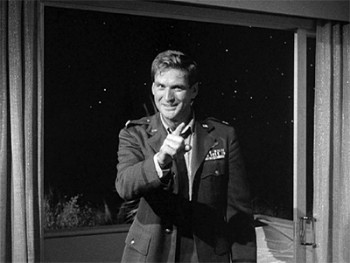 Richard Matheson, a celebrated novelist and short story writer who helped give Steven Spielberg a career boost when the young filmmaker adapted Matheson’s short story “Duel” as a TV movie, first appeared on The Twilight Zone as the author of the short story that became And When the Sky Was Opened—a bizarre tale about the universe “correcting” itself by erasing one by one a group of astronauts who shouldn’t have survived their return to Earth. This idea would crop up decades later as the Final Destination movie series. The episode also features a bit of Zone trivia: actor Charles Aidman would take over Rod Serling’s role as narrator in the 1980s revival of The Twilight Zone (a.k.a. The New Twilight Zone). Another Matheson short story, Third from the Sun, would also turn into a first season episode.
Richard Matheson, a celebrated novelist and short story writer who helped give Steven Spielberg a career boost when the young filmmaker adapted Matheson’s short story “Duel” as a TV movie, first appeared on The Twilight Zone as the author of the short story that became And When the Sky Was Opened—a bizarre tale about the universe “correcting” itself by erasing one by one a group of astronauts who shouldn’t have survived their return to Earth. This idea would crop up decades later as the Final Destination movie series. The episode also features a bit of Zone trivia: actor Charles Aidman would take over Rod Serling’s role as narrator in the 1980s revival of The Twilight Zone (a.k.a. The New Twilight Zone). Another Matheson short story, Third from the Sun, would also turn into a first season episode.
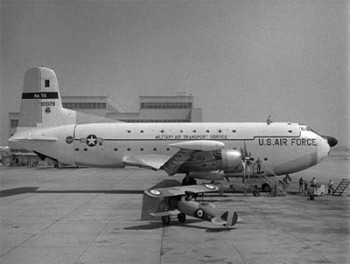 Matheson then started penning original scripts for the show. The Last Flight is an excellent time-travel paradox story about a World War I British flier who sends his biplane through a mysterious cloud…and ends up on a modern U.S. Air Force Base. He decides he has to find a way to return to his own time to right something he did wrong. The episode has some interesting similarities to a later Star Trek classic, “Tomorrow Is Yesterday.” Matheson’s other scripts for the season are A World of Difference (a man finds out his whole life is actually a TV show) and the season closer “A World of His Own.”
Matheson then started penning original scripts for the show. The Last Flight is an excellent time-travel paradox story about a World War I British flier who sends his biplane through a mysterious cloud…and ends up on a modern U.S. Air Force Base. He decides he has to find a way to return to his own time to right something he did wrong. The episode has some interesting similarities to a later Star Trek classic, “Tomorrow Is Yesterday.” Matheson’s other scripts for the season are A World of Difference (a man finds out his whole life is actually a TV show) and the season closer “A World of His Own.”
Even though the quality of the first season is high—the sort that most programs would murder to achieve today—there are a few minor pieces mixed in, such as the Be Careful What You Wish For fable The Chaser (the only script from this season that doesn’t involve either Serling, Matheson, Johnson, or Beaumont), the simplistic Deal with the Devil Escape Clause, and the I Saw This Coming from Frame One “A Nice Place to Visit.” The frequent visits from personifications of Death (One for the Angels), the Devil (both “Escape Clause” and “A Nice Place to Visit”), Fate (“Mr. Denton on Doomsday”), and God (A Passage for Trumpet; technically, it’s an angel) tend to be the lesser outings. The Devil would pop up in The Twilight Zone frequently, and I never enjoyed the concept.
But only two episodes completely flop, and both are attempts at outright comedy from near the end of the season: “Mr. Bevis” and “The Mighty Casey.” The Twilight Zone had difficulty dealing with straightforward comedy episodes, although writers like Richard Matheson could often deftly mix comic elements into serious stories. “A World of His Own,” the final episode, is one of the rare examples of a successful comedy outing, but “Mr. Bevis” and “The Mighty Casey” show the opposite side. The Mighty Casey suffers from the unfortunate circumstances of its filming, since the episode had to be largely re-shot out of Rod Serling’s own pocket after the death of the original star, Paul Douglas, a few days after filming wrapped. According to Serling, the footage was unusably grim—especially for a comedy episode—because Douglas was dying right before the camera lens. A re-shoot of the necessary scenes using Jack Warden (who had already appeared earlier in the prison planet episode The Lonely) salvaged it. Sort of. The concept of the robot on the baseball team never manages to work on any level. Mr. Bevis is a reverse of A Christmas Carol, where a kindly eccentric man (Orson Bean) gets a chance to fix the mistakes of his life if he’ll give up his oddities, so he refuses. The problem, however, is Mr. Bevis’s oddities are so pedestrian that there’s hardly a “joke” to the episode at all.
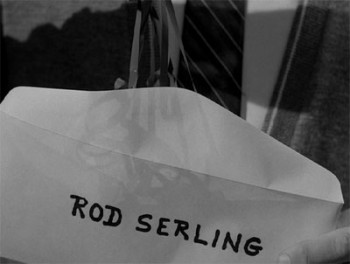 At least Richard Matheson’s strange little “bottle show” of a romp, A World of His Own, closes out the year with some pleasant self-mockery, including the first time Rod Serling appears within the context of an episode. (He had previously only shown up on camera for the hook to next week’s installment.) He appears long enough for a writer with the power to bring his creations to life (Kennan Wynn) to banish him from existence.
At least Richard Matheson’s strange little “bottle show” of a romp, A World of His Own, closes out the year with some pleasant self-mockery, including the first time Rod Serling appears within the context of an episode. (He had previously only shown up on camera for the hook to next week’s installment.) He appears long enough for a writer with the power to bring his creations to life (Kennan Wynn) to banish him from existence.
Although the first season is one the greatest for any television show, The Twlight Zone struggled in the ratings from the beginning despite critical raves. That it survived four more years—including a misguided fourth season where CBS forced Serling to elongate the show to an hour—is a testament to its brilliance and the dedication of its creative team. Fifty years later, The Twilight Zone is as famous as ever…we never got out the other dimension, but why would we want to?
Ryan Harvey is a veteran blogger for Black Gate and an award-winning author. He received the Writers of the Future Award in 2011 for his short story “An Acolyte of Black Spires,” and has two stories forthcoming in Black Gate and a number of ebooks on the way. You can keep up with him at his website, www.RyanHarveyWriter.com and follow him on Twitter.
I have been told that the first choice of The TZ producers for narrator was Orson Welles, but because he turned down the offer, Serling was chosen. Can you verify that? Thanks!
The original narrator chosen for The Twilight Zone was Westbrook Van Voorhis, a popular voice-over artist. He did do the voice-over for the pilot version of Where Is Everybody?, but Serling was unhappy with its “Big Booming Voice” sound, and decided to re-do it himself. The first season box set contains the pilot version of “Where Is Everybody?” where you can hear Westbrook Van Voorhis reading the famous introduction.
We’ve completed a documentary about Charles Beaumont and we interviewed Richard Matheson, George Clayton Johnson and many others. There’s a lot of controversy about The Twilight Zone in the documentary as well.
Many thanks Ryan. Do you think there may have been a chance Welles was approached by the producers before Van Voorhis landed the gig? The individual who related the Welles story to me is a writer in LA and has a good deal of credibility with me, yet I have seen no other evidence that Welles was solicited for the task?
Here is producer William Self’s memories of the narrator hiring for Twilight Zone:
It’s hard to tell from this memory (almost fifty years old) if Welles was actually approached or not, or if he was suggested and then someone said, “Oh, he’d ask for too much money,” and whether it was before or after Van Voorhis was tested and the producers decided to try someone else.
Thank you Ryan. I suppose only the dead know what really happended. Keep up the great work!
Fantastic write-up, Ryan; you’ve really whet my appetite to go back and watch all these again.
[…] Welcome to BillWardWriter.com! If you’re a fan of Fantasy, Science Fiction, and Horror — whether reading it, watching it, or writing it — then you’ve come to the right place. Go ahead and subscribe to my RSS feed so you don’t miss a thing. Go on and click it already, it won’t hurt you. I swear it won’t.Last Friday marked the fiftieth anniversary of the first airing of The Twilight Zone, Rod Serling’s classic spec fic anthology series that is even better than you remember it. Twist endings, social commentary, nostalgia, weirdness . . . when The Twilight Zone was good, it was very good, and when it was great there was nothing else like it on TV. Over at Black Gate Ryan Harvey has posted his thoughts on this milestone anniversary and an exhaustive look at the series first (and arguably best) season: Fifty Years in the Zone. […]
[…] however, it was a turning point for me at Black Gate. Soon after my Hercules experience, I posted a lengthy overview of the first season of The Twilight Zone for the show’s Fiftieth Anniversary. That also turned into a big success for me. I suddenly […]